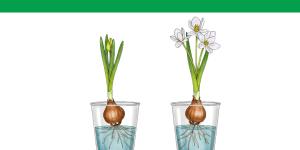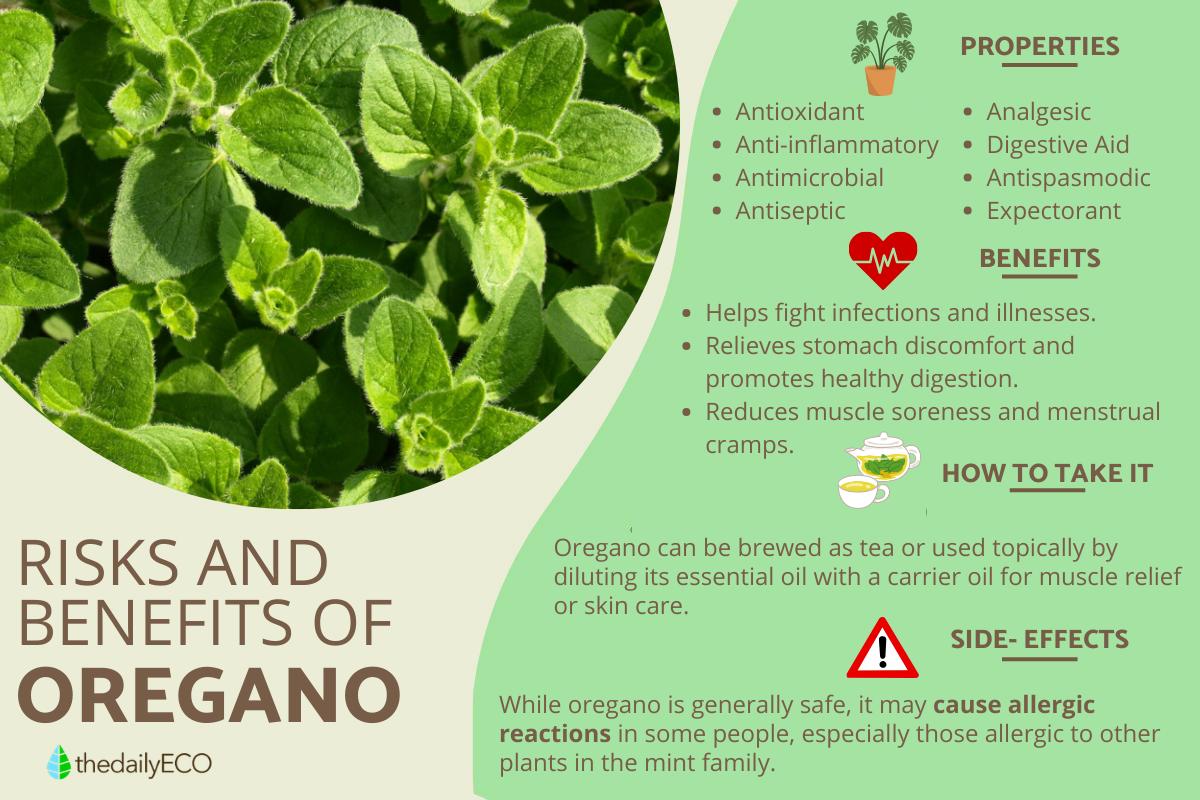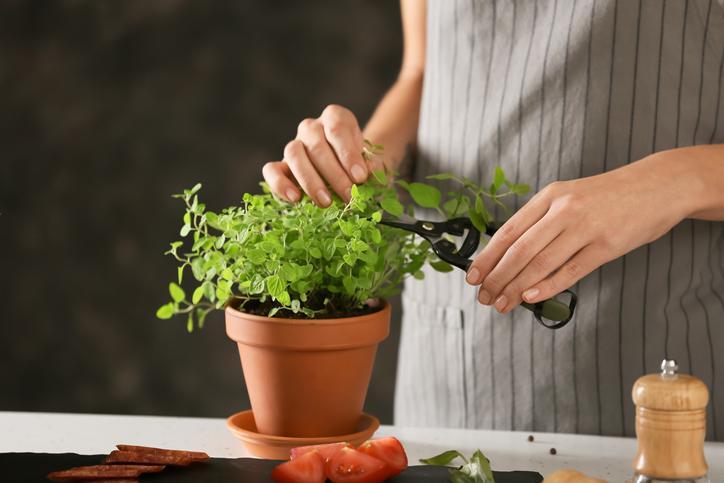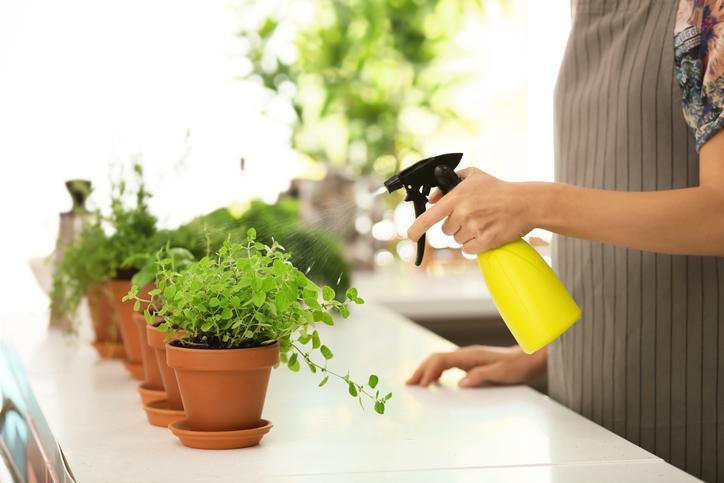How to Grow and Use Oregano

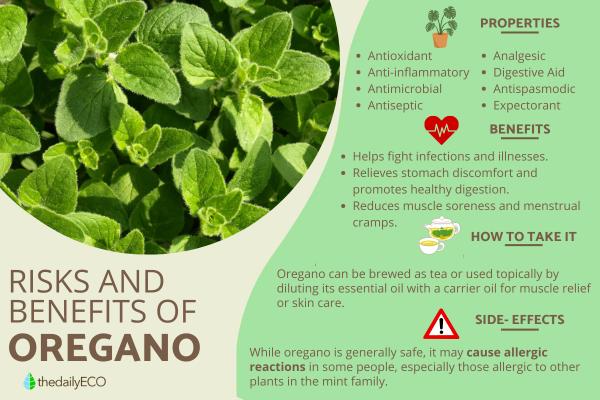
For millennia, people have valued the aromatic and adaptable plant oregano (Origanum vulgare) for its use in both cooking and medicine. This resilient plant, which is native to the Mediterranean region and southwest Eurasia, is well-known for its strong flavor, abundant essential oils, and many health benefits. Because it needs little maintenance and grows well in a range of environments, oregano is a great addition to any herb garden, regardless of gardening experience level.
In this article by thedailyECO we explore how to grow and use oregano, from planting and maintenance to harvesting and incorporating it into your kitchen and home remedies.
What is the oregano plant like – characteristics
Oregano (Origanum vulgare) is an aromatic, evergreen herb native to the Mediterranean region and southwestern Eurasia.
It typically grows in small, bushy formations, reaching around 50 cm (20 inches) in height. Its slender stems often take on a reddish hue, with dense clusters of leaves concentrated at the top.
During its flowering season, oregano produces delicate white or pink flowers arranged in inflorescences, which are sheltered by small reddish bracts.
While there are numerous varieties of oregano, the most common and widely cultivated type features vibrant green leaves. However, some varieties may have yellowish or variegated foliage, while others boast striking pink bracts.
This herb is highly valued for its pungent, slightly bitter, and earthy flavor, which intensifies when dried. Its distinct aroma comes from its high concentration of essential oils, making it a staple in Mediterranean and Latin American cuisine.
Beyond its culinary role, it has been used in traditional medicine for centuries due to its antioxidant, antibacterial, and anti-inflammatory properties.
How can I identify an oregano plant?
Oregano is easy to identify by its small, oval, grayish-green leaves that grow in opposite pairs. It has a strong, pungent aroma, especially when crushed. Stems can be woody at the base and sometimes square. Its distinctive scent and flavor are key identifiers.
Looking to create a pest-free garden? Explore some plants that are perfect for repelling mosquitoes.

How to care for an oregano plant
While oregano requires minimal maintenance, understanding its needs will help it grow faster and stronger. Below are the key care requirements to ensure a thriving oregano plant.
Soil:
Oregano is not particularly demanding when it comes to soil, but it thrives best in well-draining, calcareous soils that prevent water from accumulating around the roots. It does not tolerate excessively acidic or alkaline conditions.
For potted oregano, a universal potting mix works well, but for optimal growth, we recommend a blend of:
- 1 part worm humus for nutrients.
- 1 part peat to retain some moisture.
- 1 part coconut fiber to improve aeration.
- A small amount of perlite and vermiculite for enhanced drainage and moisture balance.
Fertilization:
Oregano does not require frequent fertilization, but it benefits from soil enriched with organic matter in moderation. Occasional use of organic fertilizers, such as worm humus, can boost plant health and aid in recovery after harvesting.
Be careful not to over-fertilize, as this may reduce the plant’s aromatic intensity.
Light:
Oregano thrives in full sun, requiring at least 6–8 hours of direct sunlight daily. If grown indoors, place it near a bright, south-facing window or use grow lights to ensure adequate exposure.
Watering:
Oregano thrives with minimal watering, as it's highly susceptible to overwatering and waterlogging. Water sparingly but regularly, just enough to keep the soil slightly moist, and always allow the soil to dry out a bit between waterings to prevent root rot.
Slightly increase watering after planting and harvesting to encourage new growth.
Pruning:
Regular pruning encourages bushier growth and prevents the plant from becoming too woody. Begin harvesting when the plant reaches 10 cm (4 inches) tall, cutting stems just above a leaf node.
The best time to harvest is right before flowering when the leaves have the highest concentration of essential oils.
Pests and diseases:
While oregano is generally pest-resistant, aphids and spider mites can sometimes appear, and can be treated with neem oil or insecticidal soap.
Powdery mildew is another occasional issue, best prevented by ensuring good air circulation and avoiding overhead watering.
Oregano is an excellent companion plant in gardens, as it helps repel pests and improves the growth of nearby crops such as:
- Tomatoes
- Peppers
- Basil
- Cabbage
Propagation methods:
There are three main ways to propagate, or create new plants from, existing oregano:
- Seeds: just like starting many other plants, you can grow oregano from seed. Plant the seeds in soil that drains well (so the roots don't sit in water and rot). Keep the soil consistently moist until the seeds sprout, which usually takes about a week or two.
- Cuttings: this method involves taking a piece of an existing oregano stem and encouraging it to grow roots. Cut a stem about 10 centimeters (or 4 inches) long. Remove the leaves from the bottom portion of the cutting, as these would rot if buried. Then, you can either place the cutting in a glass of water, changing the water regularly, or plant it directly in moist soil.
- Division: if you already have a large, established oregano plant, you can divide it. Carefully dig up the plant and gently separate the root ball into two or more sections. Each section should have a good amount of roots and some stems. Then, simply replant each section in its own spot. This is a quick way to get multiple new plants from a single mature one.
Looking to fill your home with fresh aromas? Explore some of the top indoor plants that bring both beauty and fragrance.

Properties and health benefits of oregano
Oregano (Origanum vulgare) is a highly valued medicinal herb known for its numerous health benefits.
Traditionally, it is used in its dried form to prepare infusions, while its essential oil, which contains a higher concentration of active compounds, is often applied topically or taken in diluted forms.
Among its key components are essential oils such as:
- Thymol
- Borneol
- Carvacrol,
- Caryophyllene
- Rosmarinic and chlorogenic acids
- Tannins
- Flavonoids
Thanks to this rich composition, oregano offers a variety of therapeutic properties, including:
1. Digestive support:
One of oregano’s most well-known benefits is its positive effect on digestion. It helps relieve stomach discomfort, indigestion, and gastritis while also reducing acidity and bloating. Regular consumption of oregano tea can promote better digestive health and ease discomfort caused by heavy meals.
2. Anti-inflammatory effects:
In addition to aiding digestion, oregano is a natural anti-inflammatory. It can help reduce swelling and discomfort in sore muscles and minor bruises when applied externally. Its pain-relieving properties make it useful for easing muscle tension, headaches, and even toothaches.
3. Natural antiseptic, antifungal, and antibiotic properties:
Oregano is also a potent antiseptic, antifungal, and antibiotic. Thanks to its high concentration of essential oils and acids, it is considered one of the best natural antibiotics.
It is commonly used for skin cleansing and to treat conditions like acne, dandruff, and fungal infections. Its antiseptic qualities help disinfect wounds, while its antifungal properties make it effective against skin and scalp conditions.
4. Natural pain reliever:
Oregano's essential oils give it analgesic properties, making it helpful for relieving muscle pain, toothaches, and headaches.
5. Additional health benefits:
Beyond these benefits, oregano is known for stimulating bile production, reducing gas and bloating, relieving muscle cramps and spasms, and acting as a natural diuretic. It also has expectorant properties, which help clear mucus from the respiratory tract, making it beneficial for those with colds or congestion.
To learn more about the benefits and uses of oregano oil, check out the video below.

How to use oregano
Oregano is a versatile herb, valued in the kitchen and medicine cabinet alike.
Culinary uses:
Its robust flavor and aromatic oils make it a culinary star, particularly in Mediterranean, Italian, and Mexican cuisine. It's a natural with tomatoes, garlic, olive oil, and cheese, which makes it perfect for pasta sauces, pizzas, and salads.
For the brightest flavor, add fresh oregano at the end of cooking. Dried oregano, on the other hand, with its more concentrated taste, is better suited for marinades, stews, and roasts.
Medicinal uses:
Oregano is known for its properties, which make it an excellent natural remedy. Oregano tea, made by steeping dried oregano leaves in hot water, can be consumed to soothe an upset stomach, ease indigestion, or relieve cold symptoms such as coughs and congestion. Simply brew 1-2 teaspoons of dried leaves in hot water for about 5-10 minutes for a calming, digestive-friendly beverage.
For a more potent effect, oregano essential oil offers concentrated benefits. It should always be diluted before use. Mix a few drops of oregano oil with a carrier oil like coconut oil or olive oil and gently massage it onto sore muscles or achy joints for relief. It can also be used in aromatherapy, simply add a few drops to a diffuser to help relieve stress, or inhale its steam to clear sinus congestion.
Additionally, oregano is said to help alleviate menstrual cramps. A few drops of diluted oregano oil can be massaged into the lower abdomen to reduce pain. Alternatively, adding a few drops to a warm bath may provide soothing relief.
Oregano in the garden:
Its strong aroma naturally deters mosquitoes, flies, and other pests. Growing oregano near your vegetable garden or seating areas can help create a natural barrier against unwanted insects.
To take it a step further, you can dry oregano leaves and use them to create a natural, non-toxic insect repellent. Simply hang dried oregano bundles in windows or place sachets of dried leaves around the house to keep insects at bay.
Additionally, oregano’s flowers attract beneficial pollinators, such as bees and butterflies, promoting a healthy, thriving garden.
If you loved learning about oregano, dive deeper into the world of aromatic herbs with our guide on another popular plant, lavender.
If you want to read similar articles to How to Grow and Use Oregano, we recommend you visit our Plant care and cultivation category.
- Cebrián, J., (2012), Dictionary of medicinal plants , Barcelona, Spain, Integral RBA Books.
- Festy, D. and Pacchioni, I., (2016), Guide to aromatherapy , Barcelona, Spain, Ediciones Obelisco.
- Worwood, VA, (2018), Essential Oils and Aromatherapy , Madrid, Spain, Gaia Editions.



